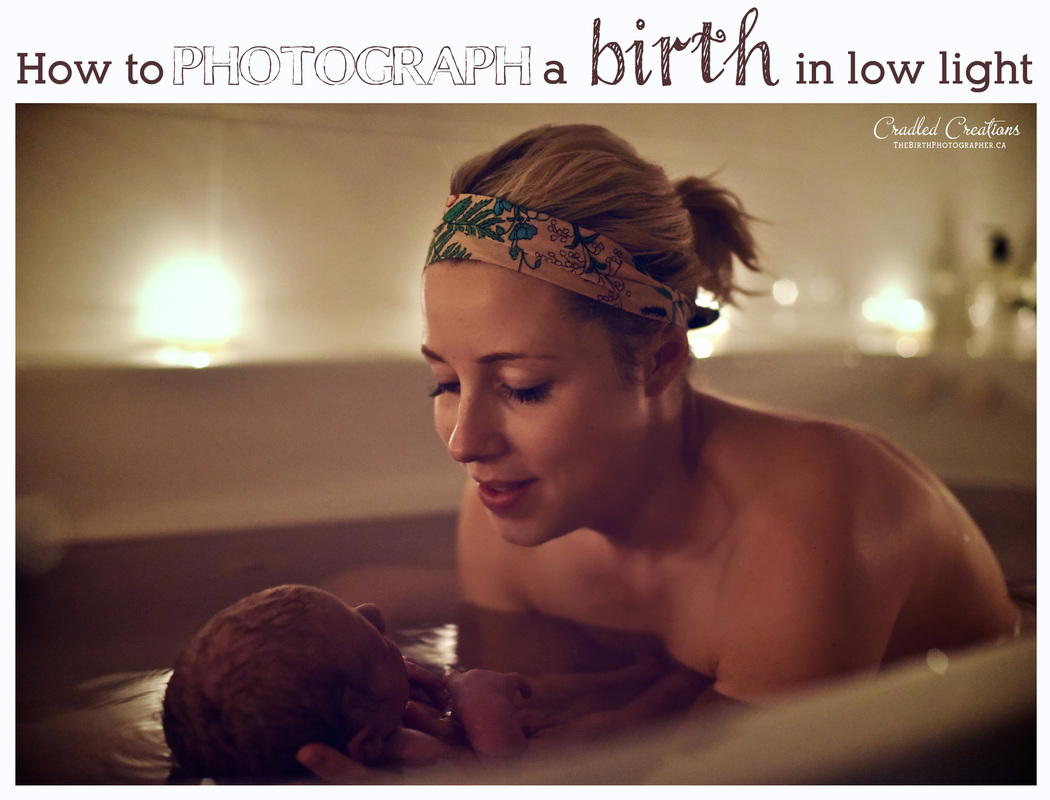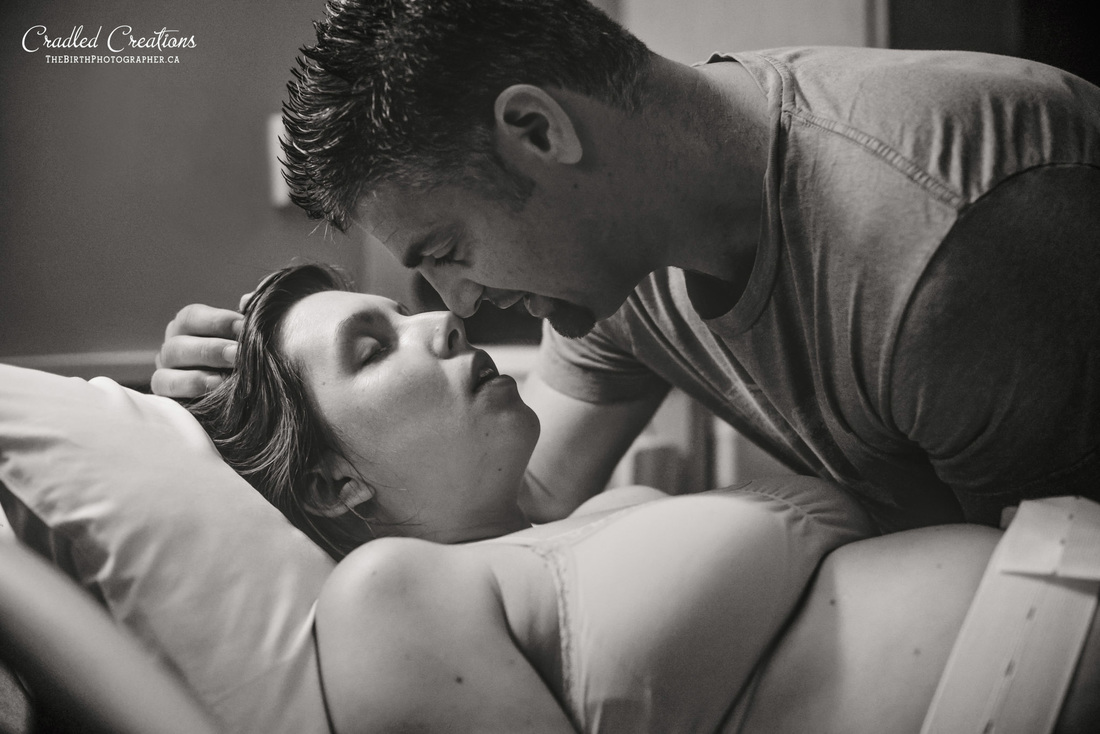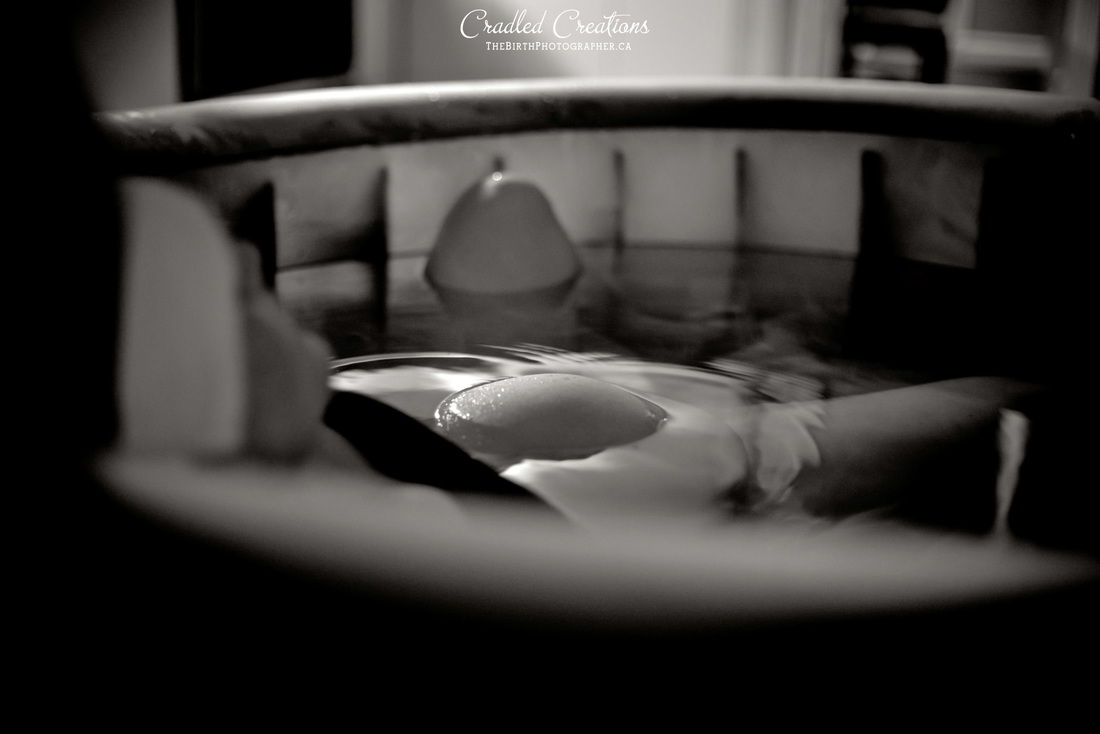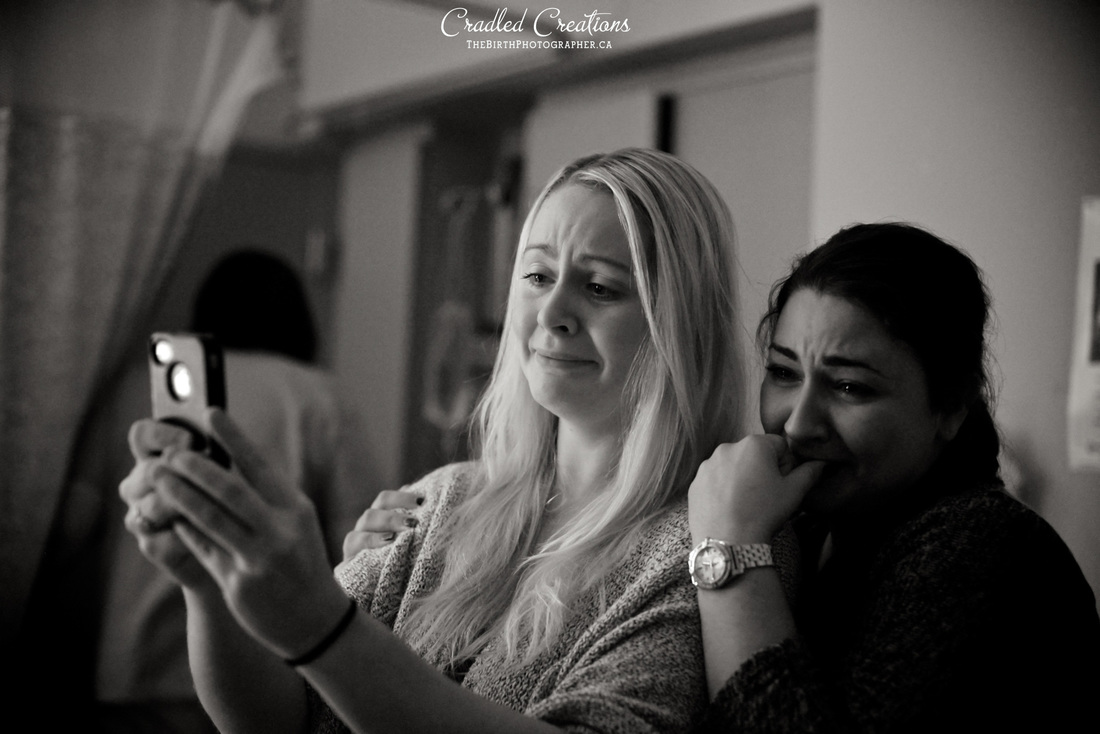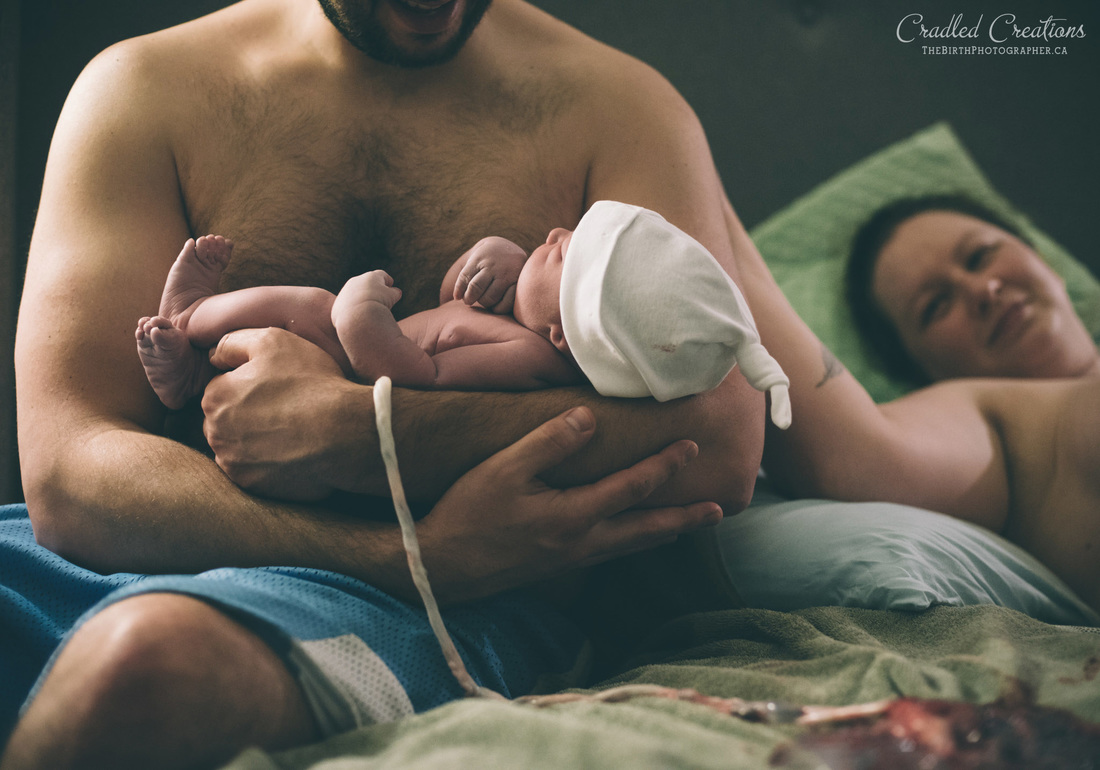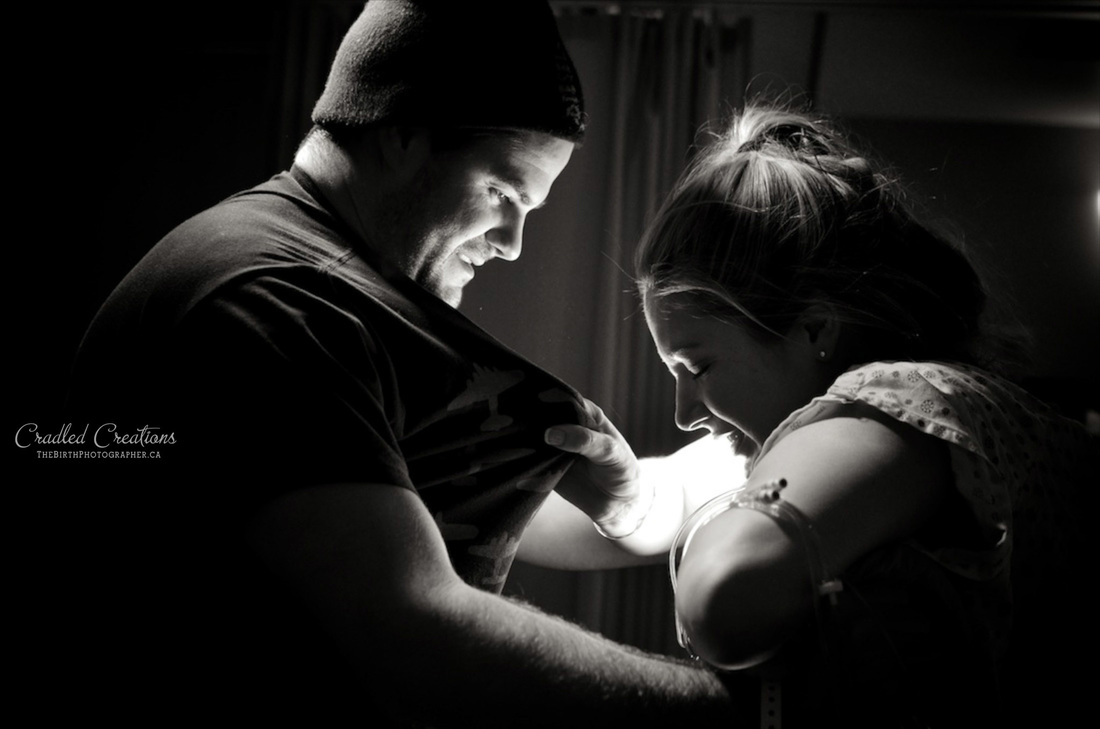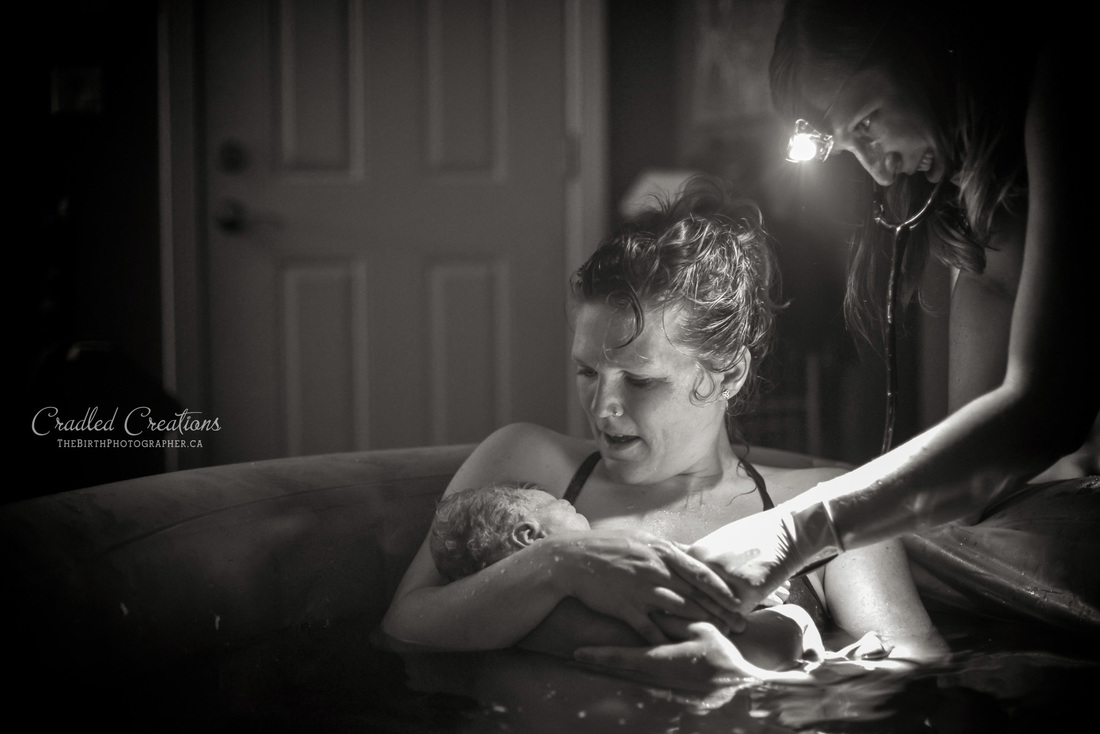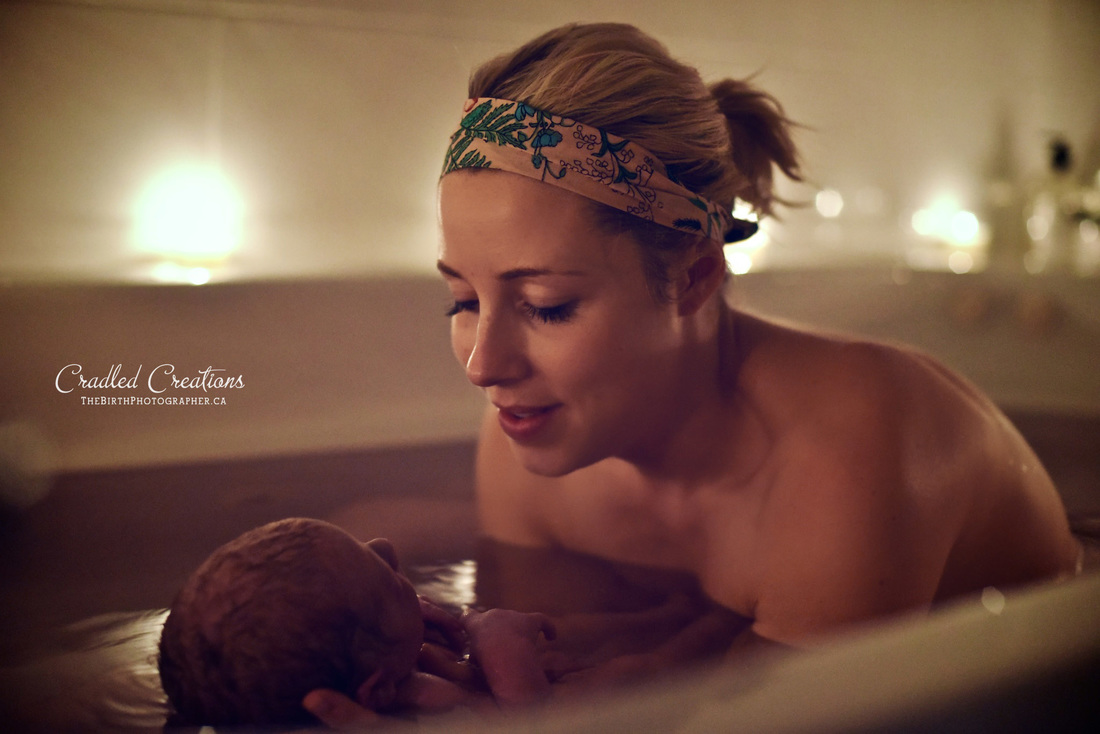|
I am so honoured to write "Tuesday's Tip" for the Birth Photography Facebook Page.
If you can predict anything about birth photography, it's that a birthing environment is unpredictable. Most births seem to happen at night, when the world is already dark and calm. Birth is a primal experience and women feel much more comfortable and relaxed when their surroundings are dark. Just think about it… you are vulnerable when you are labouring; would you feel more comfortable labouring and having your legs spread open in a bright room where everyone can see you or in a dark room where you feel safe and relaxed and alone? Often the lights in a birth room are turned off or turned low to give that labouring mama the privacy she needs to relax and release her baby. So, the million dollar photography question, "how do you shoot in low light without a flash?" There is definitely a time and a place for using flash in birth photography and you should never go to a birth without a flash in your toolkit, but I try to use it as seldom as possible. Instead, I love shooting in low light and embrace those divinely beautiful next-to-no-light scenes. Shooting without a flash in low light gives you a lovely bokeh, and I admit the photos will be softer than the crisp images you can get with flash, but they also tell the story of the birth environment so truthfully and portray the romantic drama and emotion of a birth story. First things first, the idea that "it's not the gear you have, it's how you use it," well, that idea doesn't apply to low-light photography. If you want to take brilliant birth photos in the dark, then you need top of the line gear. You absolutely must be shooting on a full frame camera with a lens that can shoot at a low aperture. If you are shooting on entry level gear, your photos WILL be blurry and littered with grain, or worst case scenario you won't even be able to focus your camera and will miss a moment all together because your camera sensor won't have enough light to find your subject. If you want to shoot births, you must have professional gear and be prepared to shoot it in next-to-no-light. Second, practice makes perfect, but don't practice with actual births. A birth happens once in a lifetime, you must know how to use your gear before advertising to photograph births. You should be able to change your settings in a moments notice so you don't miss a shot. Practice at home, at night with only a few candles lit in your bedroom. You should be able to capture crisp images with a moving subject. Third, let's talk settings. I push my camera to it's limits. When the lights go out, I crank my ISO up. I'm comfortable shooting as high as 12,800. Yes, there will be a lot of grain (which I choose to embrace) but this can also be improved in post-production when editing in Lightroom or Photoshop. I also have no problem pushing my lens to it's limits and will shoot with apertures at 1.4 if I absolutely need to. I prefer to keep my aperture around 2.8 for most scenarios, but in low light, I don't mind shooting wide open. Fourth, it's just common sense, but you must have a steady hand when you push down that shutter button. Since I stretch my shutter speeds to low levels, it's important that I have a very steady hand. I will often brace my camera with my elbows in against my body to give extra stabilization. Camera shake can easily ruin a photo when you are shooting with such delicate settings. So make sure to focus on the exact spot you are intending to (there is less forgiveness at these settings) and hold still while the shutter takes 2 shots-- the first one might be blurry, but the second one will be perfect. Here are a few low-light photos, taken in dark rooms with 1 small light source to show you some moody examples of the beauty of low-light birth photography.
16 Comments
Jodie
5/19/2015 12:29:30 pm
Thank you so much. I keep getting told to not put my iso past 1600 but in all my practice my images are way better in lowlight when I crank it up and keep my aperture ans shutter down.
Reply
Jessica
6/6/2015 03:28:44 pm
Can you tell me what camera you use for birth photography? great blog by the way, and beautiful pictures! Thank you for sharing.
Reply
Hayley Boss
6/30/2017 01:28:05 pm
How do you keep your photos from being noisy with such a high ISO?
Reply
Amanda
7/2/2017 02:12:13 pm
Do you think a Nikon D610 is much different than the D750?
Reply
Jaydene
7/2/2017 02:15:53 pm
I love my 750. Once I upgraded I notice a big improvement in my noise reduction for sure.
Reply
Jessiika Wilson
8/23/2017 05:33:24 pm
Thank you for such a great article! I am currently trying to learn as much as I can before stepping into the world of birth photography!
Reply
Jaydene
8/23/2017 07:36:36 pm
The 750 is amazing (it's what I use) but I would also say carrying a flash is essential (as sometimes at a birth you have no light to work with) and a good fast lens like a 35mm or 50mm
Reply
Jessiika
8/24/2017 11:43:23 pm
Thanks for your response! I've just been informed that we're still under contract for our D5600 so can't upgrade just yet!
Reply
Hales
10/3/2017 12:47:48 am
great article i shot my first birth a yr ago in hospital (lots of bright lights) with a canon 40D and a sigma 24-70 F2.8 i did use a fill in flash but not on all of it, im now doing a home birth and have a 5D full frame ive got a 1.8 50mm prime im practising with its good to know its ok to whack the iso up and a full frame is not so grainy yay
Reply
Jaydene
9/19/2018 11:24:14 pm
Amanda,
Reply
12/8/2020 10:39:09 pm
It really helped when you said that it would be best to hire the photographer in advanced
Reply
8/26/2022 12:01:31 pm
I was about to head about to a camera store to upgrade my 5D III to a R6, and to get a lens, when I started doubting about the lens and found this article. Thank you so much for sharing this!!! Your photos made me cry, and be even more excited about my upcoming first birth.
Reply
Leave a Reply. |

